I'm using an STM32 (STM32F446RE) to receive audio from two INMP441 mems microphone in an stereo setup via I2S protocol and record it into a .WAV on a micro SD card, using the HAL library.
I wrote the firmware that records audio into a .WAV with FreeRTOS. But the audio files that I record sound like Darth Vader. Here is a screenshot of the audio in audacity:

if you zoom in you can see a constant noise being inserted in between the real audio data:

I don't know what is causing this.
I have tried increasing the MessageQueue, but that doesnt seem to be the problem, the queue is kept at 0 most of the time. I've tried different frame sizes and sampling rates, changing the number of channels, using only one inmp441. All this without any success.
I proceed explaining the firmware.
Here is a block diagram of the architecture for the RTOS that I have implemented:

It consists of three tasks. The first one receives a command via UART (with interrupts) that signals to start or stop recording. the second one is simply an state machine that walks through the steps to write a .WAV.
Here the code for the WriteWavFileTask:
switch(audio_state)
{
case STATE_START_RECORDING:
sprintf(filename, "%saud_%03d.wav", SDPath, count++);
do
{
res = f_open(&file_ptr, filename, FA_CREATE_ALWAYS|FA_WRITE);
}
while(res != FR_OK);
res = fwrite_wav_header(&file_ptr, I2S_SAMPLE_FREQUENCY, I2S_FRAME, 2);
HAL_I2S_Receive_DMA(&hi2s2, aud_buf, READ_SIZE);
audio_state = STATE_RECORDING;
break;
case STATE_RECORDING:
osDelay(50);
break;
case STATE_STOP:
HAL_I2S_DMAStop(&hi2s2);
while(osMessageQueueGetCount(AudioQueueHandle)) osDelay(1000);
filesize = f_size(&file_ptr);
data_len = filesize - 44;
total_len = filesize - 8;
f_lseek(&file_ptr, 4);
f_write(&file_ptr, (uint8_t*)&total_len, 4, bw);
f_lseek(&file_ptr, 40);
f_write(&file_ptr, (uint8_t*)&data_len, 4, bw);
f_close(&file_ptr);
audio_state = STATE_IDLE;
break;
case STATE_IDLE:
osThreadSuspend(WAVHandle);
audio_state = STATE_START_RECORDING;
break;
default:
osDelay(50);
break;
Here are the macros used in the code for readability:
#define I2S_DATA_WORD_LENGTH (24) // industry-standard 24-bit I2S
#define I2S_FRAME (32) // bits per sample
#define READ_SIZE (128) // samples to read from I2S
#define WRITE_SIZE (READ_SIZE*I2S_FRAME/16) // half words to write
#define WRITE_SIZE_BYTES (WRITE_SIZE*2) // bytes to write
#define I2S_SAMPLE_FREQUENCY (16000) // sample frequency
The last task is the responsible for processing the buffer received via I2S. Here is the code:
void convert_endianness(uint32_t *array, uint16_t Size) {
for (int i = 0; i < Size; i++) {
array[i] = __REV(array[i]);
}
}
void HAL_I2S_RxCpltCallback(I2S_HandleTypeDef *hi2s)
{
convert_endianness((uint32_t *)aud_buf, READ_SIZE);
osMessageQueuePut(AudioQueueHandle, aud_buf, 0L, 0);
HAL_I2S_Receive_DMA(hi2s, aud_buf, READ_SIZE);
}
void pvrWriteAudioTask(void *argument)
{
/* USER CODE BEGIN pvrWriteAudioTask */
static UINT *bw;
static uint16_t aud_ptr[WRITE_SIZE];
/* Infinite loop */
for(;;)
{
osMessageQueueGet(AudioQueueHandle, aud_ptr, 0L, osWaitForever);
res = f_write(&file_ptr, aud_ptr, WRITE_SIZE_BYTES, bw);
}
/* USER CODE END pvrWriteAudioTask */
}
This tasks reads from a queue an array of 256 uint16_t elements containing the raw audio data in PCM. f_write takes the Size parameter in number of bytes to write to the SD card, so 512 bytes. The I2S Receives 128 frames (for a 32 bit frame, 128 words).
The following is the configuration for the I2S and clocks:
Any help would be much appreciated!
Solution
As pmacfarlane pointed out, the problem was with the method used for buffering the audio data. The solution consisted of easing the overhead on the ISR and implementing a circular DMA for double buffering. Here is the code:
#define I2S_DATA_WORD_LENGTH (24) // industry-standard 24-bit I2S
#define I2S_FRAME (32) // bits per sample
#define READ_SIZE (128) // samples to read from I2S
#define BUFFER_SIZE (READ_SIZE*I2S_FRAME/16) // number of uint16_t elements expected
#define WRITE_SIZE_BYTES (BUFFER_SIZE*2) // bytes to write
#define I2S_SAMPLE_FREQUENCY (16000) // sample frequency
uint16_t aud_buf[2*BUFFER_SIZE]; // Double buffering
static volatile int16_t *BufPtr;
void convert_endianness(uint32_t *array, uint16_t Size) {
for (int i = 0; i < Size; i++) {
array[i] = __REV(array[i]);
}
}
void HAL_I2S_RxHalfCpltCallback(I2S_HandleTypeDef *hi2s)
{
BufPtr = aud_buf;
osSemaphoreRelease(RxAudioSemHandle);
}
void HAL_I2S_RxCpltCallback(I2S_HandleTypeDef *hi2s)
{
BufPtr = &aud_buf[BUFFER_SIZE];
osSemaphoreRelease(RxAudioSemHandle);
}
void pvrWriteAudioTask(void *argument)
{
/* USER CODE BEGIN pvrWriteAudioTask */
static UINT *bw;
/* Infinite loop */
for(;;)
{
osSemaphoreAcquire(RxAudioSemHandle, osWaitForever);
convert_endianness((uint32_t *)BufPtr, READ_SIZE);
res = f_write(&file_ptr, BufPtr, WRITE_SIZE_BYTES, bw);
}
/* USER CODE END pvrWriteAudioTask */
}



